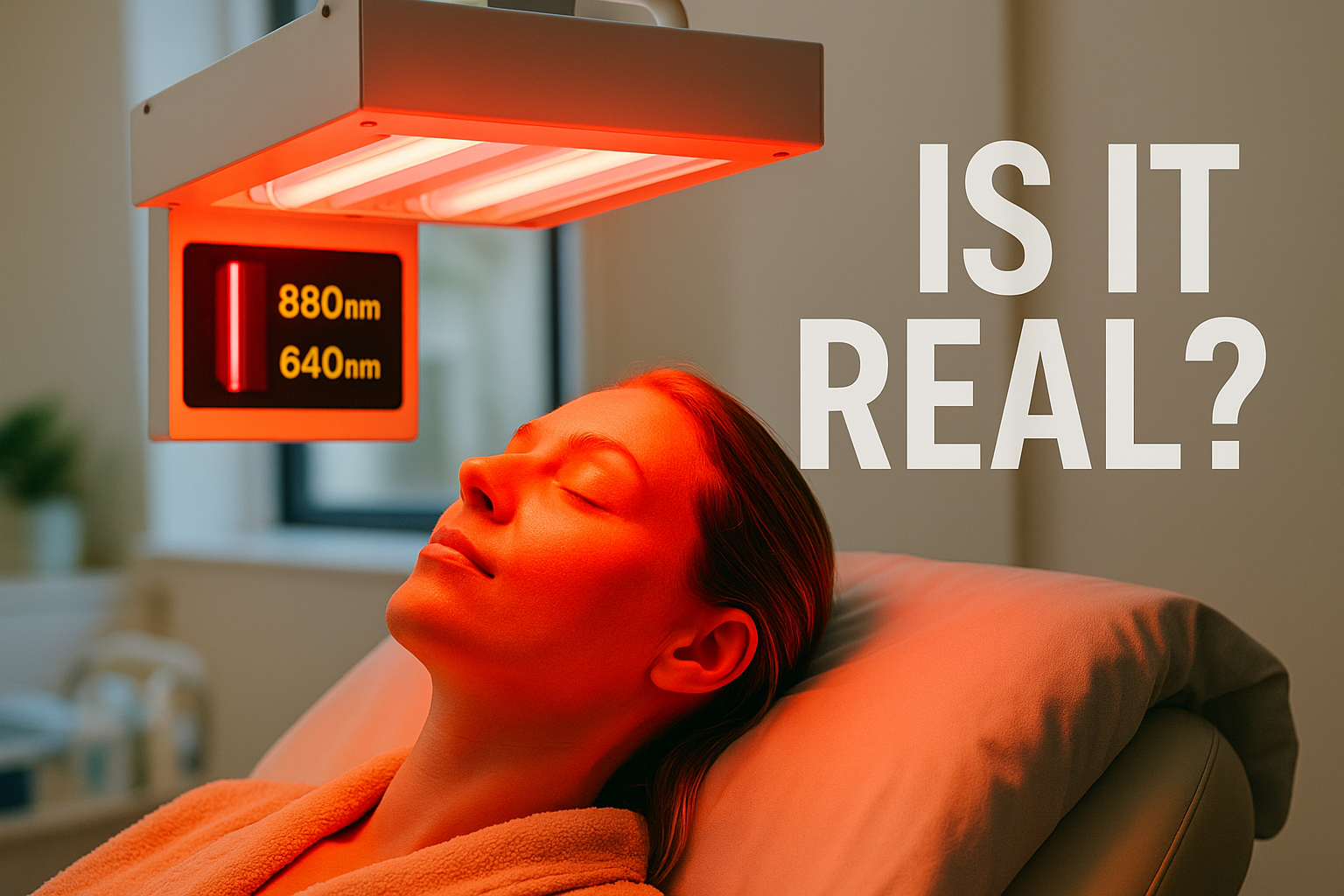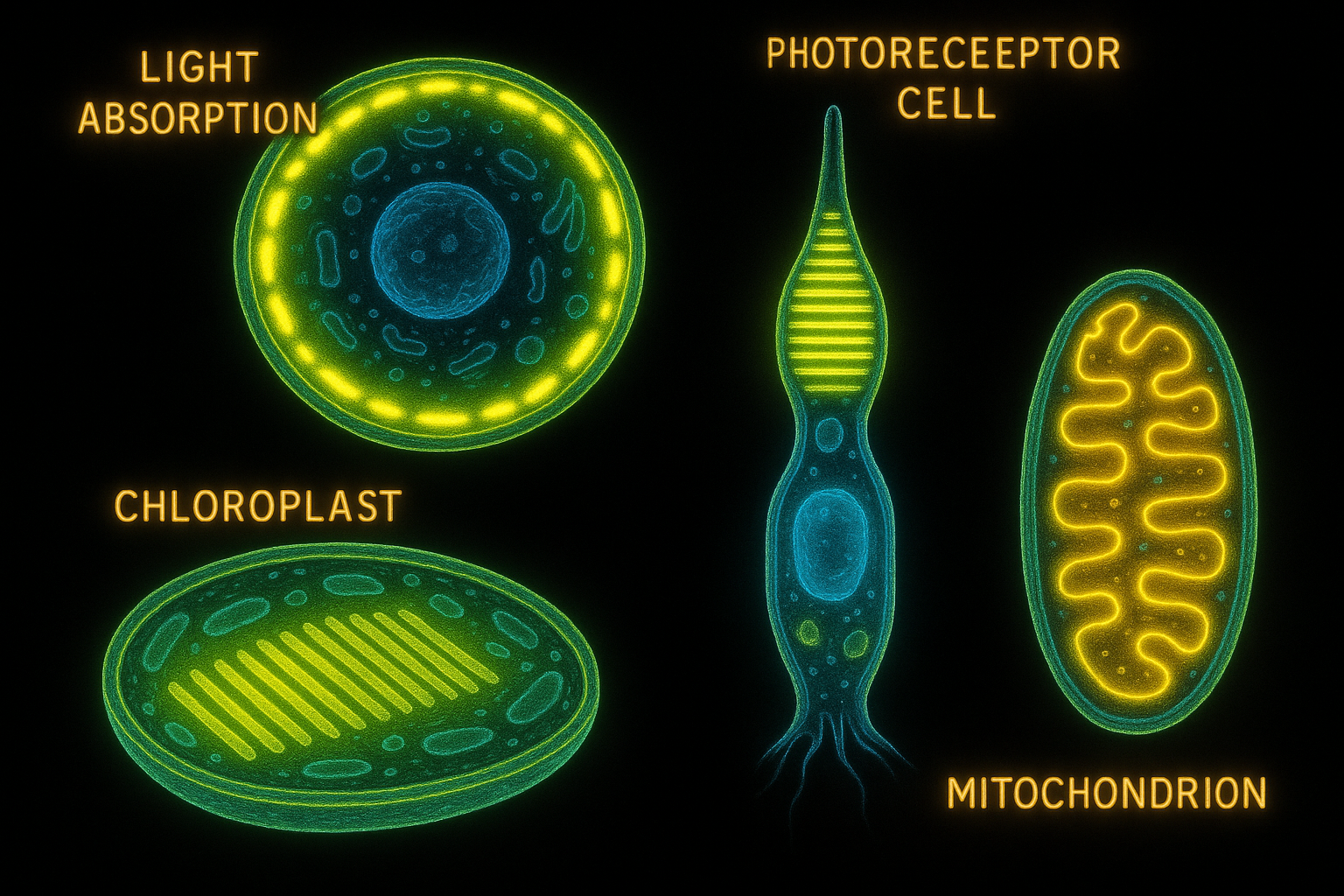Article: Is Red Light Therapy Real or a Hoax?

Is Red Light Therapy Real or a Hoax?
It sounds almost too good to be true: sit under a panel of glowing red lights, and your skin looks younger, your pain fades, your wounds heal faster, even your hair grows back. With claims like these, it’s fair to ask — is red light therapy real science or just another wellness hoax?
Let’s dive in.
Here’s what makes red light therapy stand apart from passing fads: it’s grounded in a field of science called photobiomodulation. Specific wavelengths of red light (around 640 nanometers) and near-infrared light (around 880 nanometers) can travel beneath the skin to reach your cells.
Once inside, this light interacts with the mitochondria — the tiny power plants that generate energy for your body. Exposed to the right light, mitochondria work more efficiently, producing more ATP, the energy currency that fuels repair, regeneration, and everyday function.
But before you rush out to buy a red light therapy device, it’s important to know what actually makes a good one. Not all devices are created equal, and the right choice can make the difference between real results and wasted money.
LED light therapy devices must be designed and built based on established scientific principles to ensure their effectiveness. Devices that do not follow these principles are essentially ordinary light bulbs. No matter how it is debated, the following points are grounded in science, not opinions. They are based on scientific evidence and facts.
Scientific Factors that matters
1️⃣ Proven Wavelengths
Wavelength matters because it determines whether light can penetrate the skin to interact with chromophores (like cytochrome c oxidase in mitochondria).
👉 Cytochrome c oxidase absorbs red (~660 nm) & near-infrared (800–880 nm) to boost ATP production.
❌ Wrong wavelengths = no effect.
🔍 What to look for:
Choose devices registered as medical devices with regulatory authorities. They meet stringent standards and demonstrate clinically verified benefits. Be cautious of unverified devices or exaggerated marketing claims.
2️⃣ Power Output
Many think light intensity (irradiance, mW/cm²) is the best measure. But this only shows strength at one moment.
✅ The more reliable measure is Joules (J) — total energy delivered over the session. Joules = how much “work” the light has done.
⚠️ Some brands emphasize only irradiance to look more powerful, while hiding the real energy delivered.
🔍 What to look for:
Reliable manufacturers specify total energy in Joules for a full treatment session — not just irradiance numbers.
3️⃣ Delivery Distance
The closer the device is to the skin, the less energy is lost.
📉 According to the inverse square law: doubling the distance cuts intensity to ¼. This drastically reduces therapeutic effect.
🔍 What to look for:
Devices designed for close contact ensure maximum absorption & effectiveness.
4️⃣ Treatment Time
⏱ Optimal session length: 20–30 minutes.
This allows enough energy absorption to stimulate ATP production, collagen synthesis & reduce inflammation.
⚠️ Too short (like 5 mins) = ineffective. Longer doesn’t add benefits — just wasted energy.
🔍 What to look for:
Devices that follow clinically validated protocols of 20–30 minutes.
5️⃣ Pulsing Mode
Ever noticed Celluma’s gentle pulsating light? It’s not just for show — it’s backed by science.
📖 Research by Dr. Daniel Barolet shows pulsing:
✔️ Enhances energy transfer
✔️ Improves cellular communication
✔️ Supports healing & collagen production
✔️ Reduces inflammation
This dynamic approach syncs with the body’s natural rhythms for superior outcomes.


Leave a comment
This site is protected by hCaptcha and the hCaptcha Privacy Policy and Terms of Service apply.